Economics of Development: Essential Concepts for Reading Comprehension
The economics of development examines how countries achieve economic growth, reduce poverty, and improve living standards. It explores the interplay between policies, resources, and global trends in shaping economic progress. RC passages on this topic often analyze development frameworks, challenges, and strategies for equitable growth. Understanding these concepts equips readers to critically evaluate the mechanisms driving economic transformation in diverse contexts.
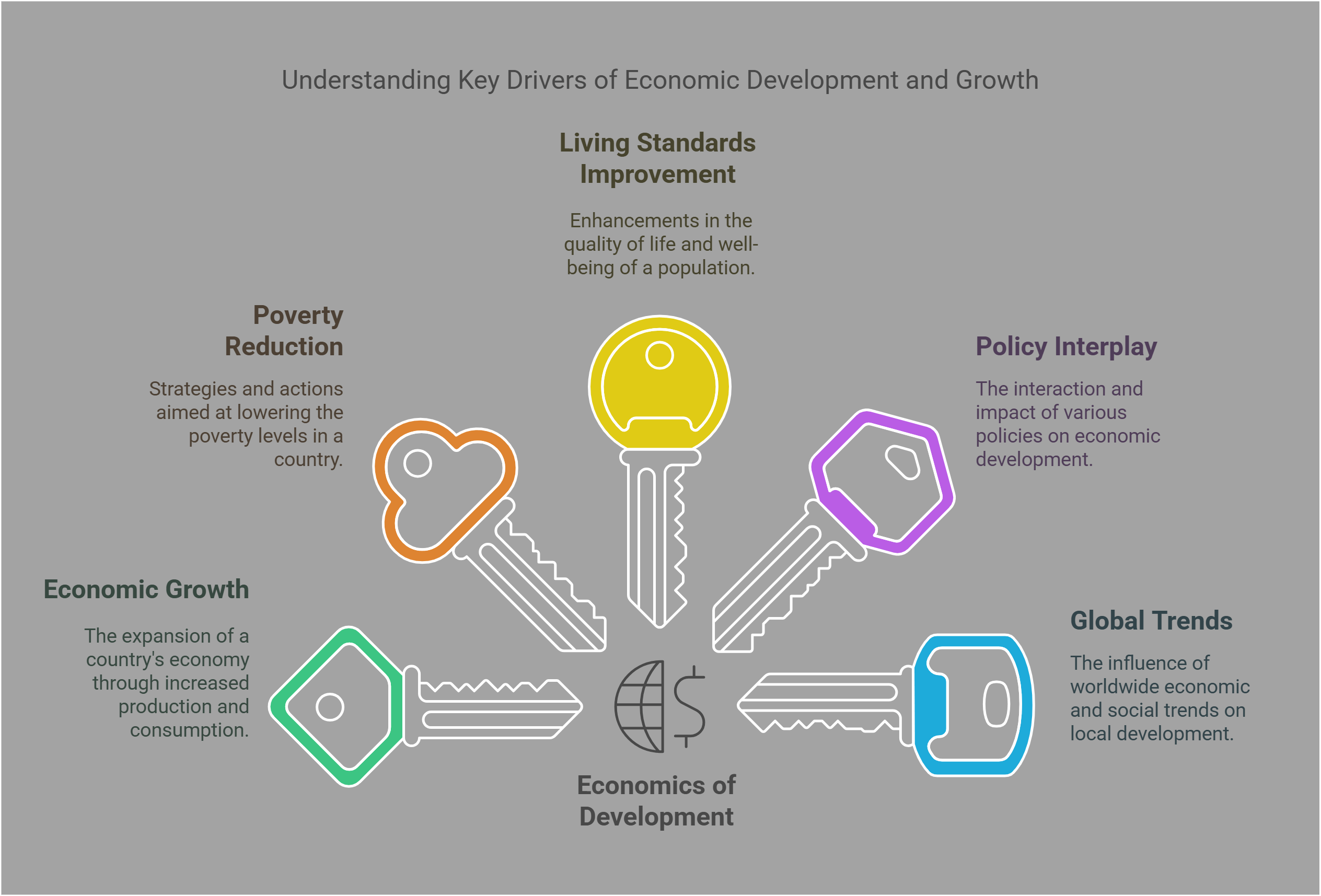
📋 Key Concepts
This guide explores the following essential concepts in the economics of development:
- Human Development Index (HDI)
- Microfinance
- Foreign Aid
- Sustainable Development Goals (SDGs)
- Poverty Alleviation
- Trade Liberalization
- Resource Dependency
- Economic Inequality
- Import Substitution
- Economic Resilience
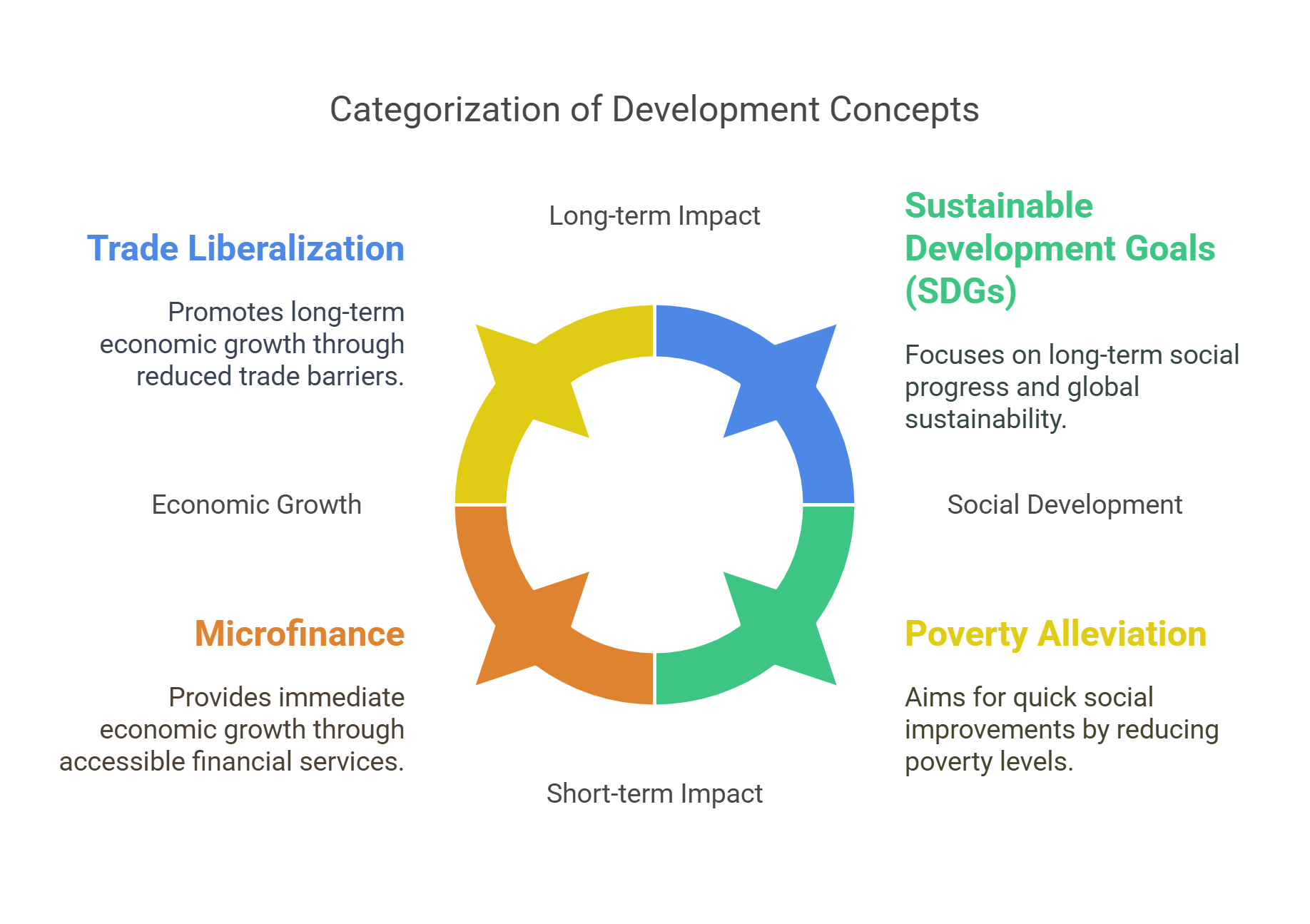
🔍 Detailed Explanations
1. Human Development Index (HDI)
The Human Development Index (HDI) is a composite measure created by the United Nations to assess a country’s overall development by combining economic and social indicators. It goes beyond GDP to evaluate well-being.
- Key Components:
- Life Expectancy Index: Measures health and longevity.
- Education Index: Assesses access to education, combining mean years of schooling and expected years of schooling.
- Income Index: Evaluates standard of living using per capita income (PPP-adjusted).
- Applications:
- Helps identify disparities between countries and within regions.
- Guides policymakers in targeting sectors needing improvement.
Example: Norway consistently ranks high on the HDI due to its robust education, healthcare, and income levels.
Explained Simply: The HDI is like a report card for countries, grading them on health, education, and wealth.
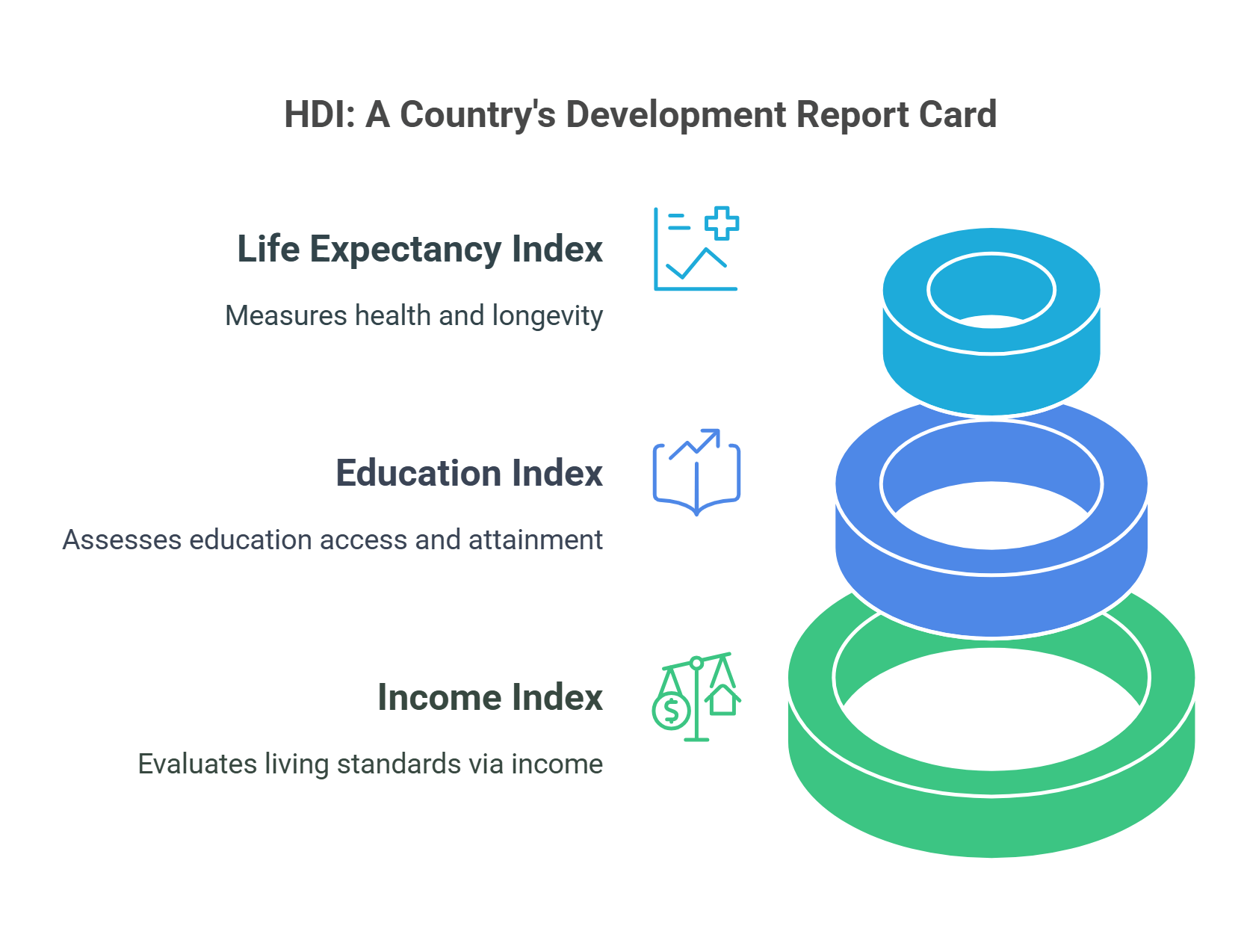
2. Microfinance
Microfinance provides small loans, savings accounts, and financial services to low-income individuals or entrepreneurs, often in developing countries. It aims to empower marginalized groups, particularly women, by fostering self-reliance.
- Key Features:
- Loans require little or no collateral.
- Group lending models encourage mutual accountability.
- Benefits:
- Promotes entrepreneurship and job creation.
- Enables access to credit for people excluded from traditional banking systems.
- Criticisms:
- High-interest rates can burden borrowers.
- Overemphasis on lending may neglect other development needs like education or healthcare.
Example: Grameen Bank, founded in Bangladesh by Muhammad Yunus, pioneered microfinance, lifting millions out of poverty.
Explained Simply: Microfinance is like a financial stepping stone, helping small entrepreneurs climb out of poverty.
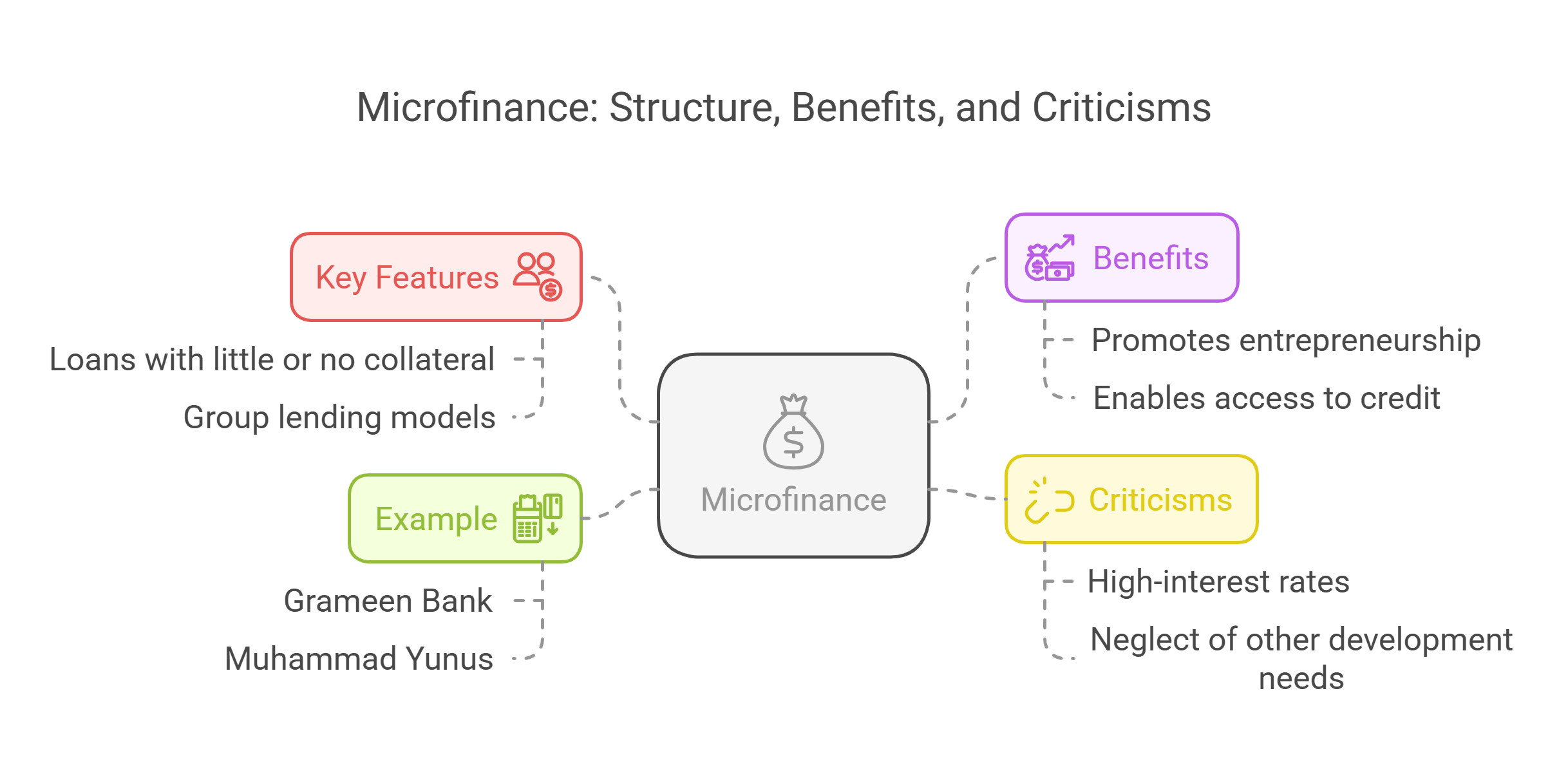
3. Foreign Aid
Foreign aid refers to financial, technical, or humanitarian assistance provided by one country or organization to another, typically aimed at fostering development or responding to crises.
- Types of Aid:
- Bilateral Aid: Direct assistance between two countries.
- Multilateral Aid: Distributed through international organizations like the World Bank.
- Humanitarian Aid: Emergency assistance during conflicts or natural disasters.
- Challenges:
- Dependency: Recipients may rely on aid rather than building self-sustaining economies.
- Mismanagement: Corruption or inefficient allocation reduces impact.
Example: The Marshall Plan helped rebuild Europe after World War II, demonstrating foreign aid’s transformative potential.
Explained Simply: Foreign aid is like a helping hand extended to countries in need, though it must be used wisely.
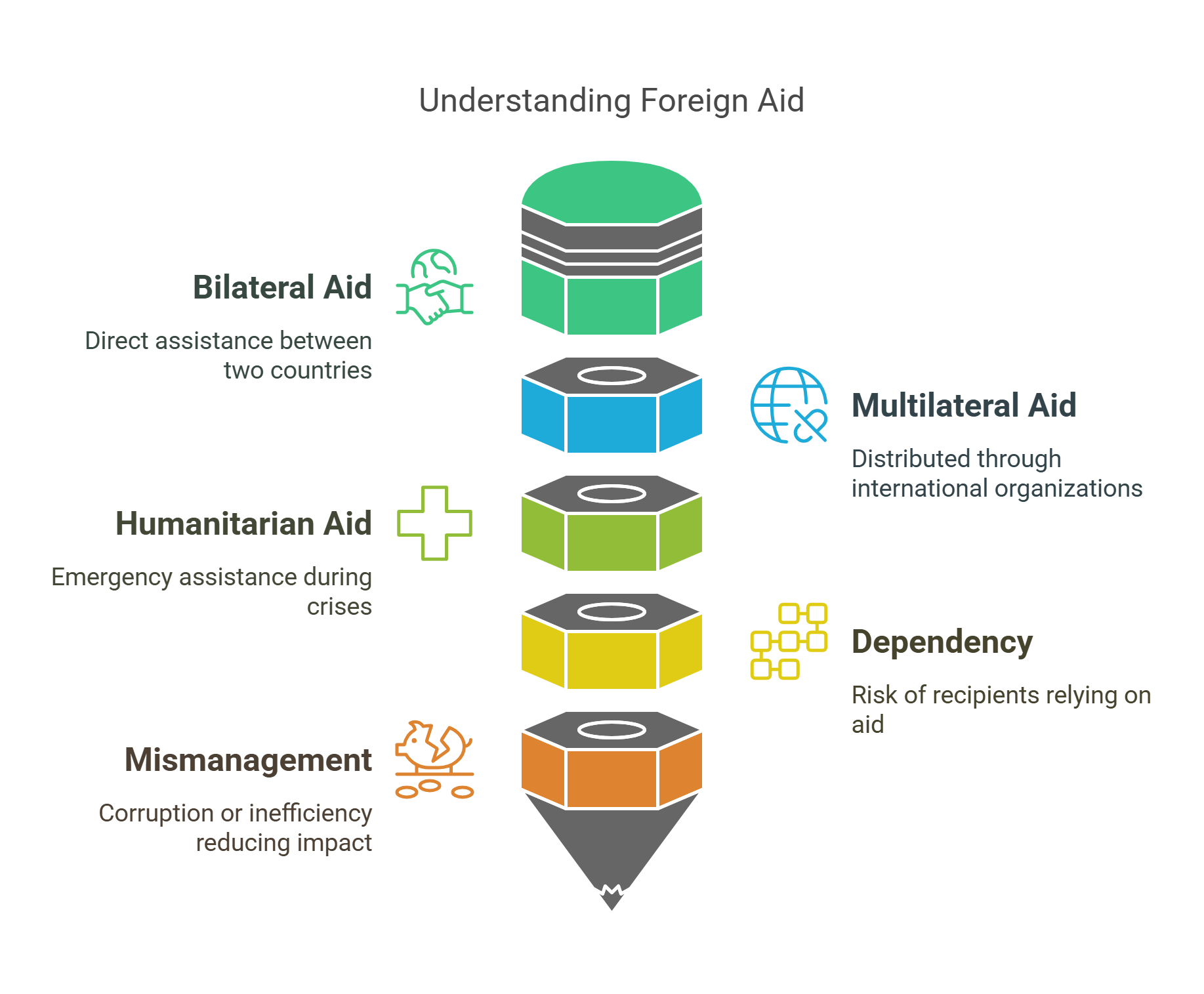
4. Sustainable Development Goals (SDGs)
The Sustainable Development Goals (SDGs) are a set of 17 global objectives established by the United Nations in 2015 to end poverty, protect the planet, and ensure peace and prosperity by 2030.
- Key Areas of Focus:
- Economic Growth: Promote decent work and economic opportunities (Goal 8).
- Social Inclusion: Ensure quality education (Goal 4) and gender equality (Goal 5).
- Environmental Sustainability: Combat climate change (Goal 13) and protect biodiversity (Goal 15).
- Applications:
- Provides a universal framework for aligning development policies and initiatives.
- Tracks progress through measurable indicators.
Example: Rwanda’s national development strategies align with the SDGs, focusing on poverty reduction and green energy initiatives.
Explained Simply: The SDGs are like a global to-do list for creating a better, more sustainable future.
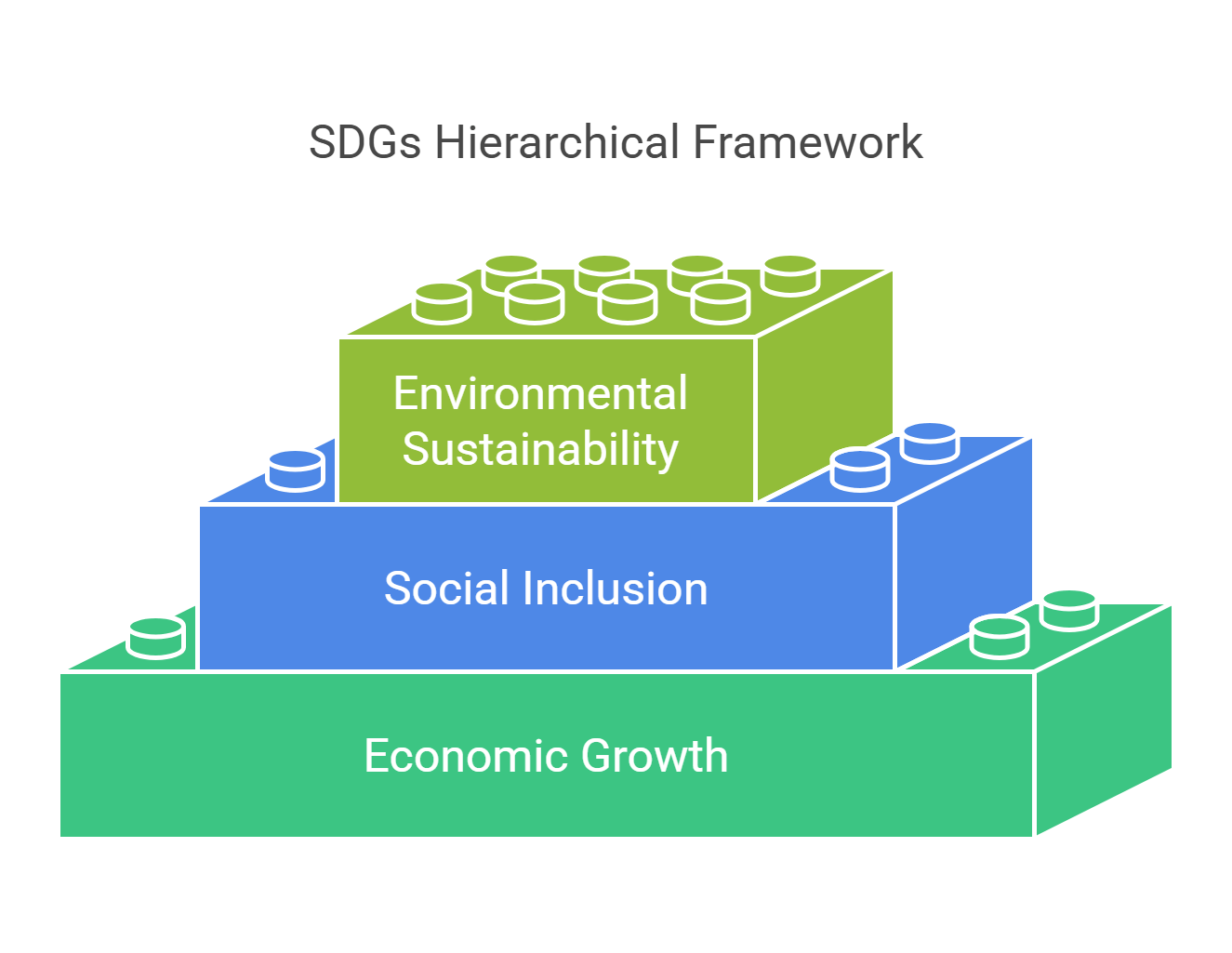
5. Poverty Alleviation
Poverty alleviation involves strategies to reduce the incidence and severity of poverty by improving access to resources, education, and opportunities.
- Key Approaches:
- Cash Transfers: Provide direct financial support to poor households.
- Education and Training: Equip individuals with skills to secure better jobs.
- Infrastructure Development: Improve access to basic services like water, electricity, and transportation.
- Challenges:
- Systemic issues like inequality and corruption often undermine efforts.
- Climate change disproportionately affects impoverished communities, increasing vulnerability.
Example: Brazil’s Bolsa Família program provides conditional cash transfers to low-income families, reducing extreme poverty.
Explained Simply: Poverty alleviation is like building bridges out of poverty, offering tools and support to cross over.
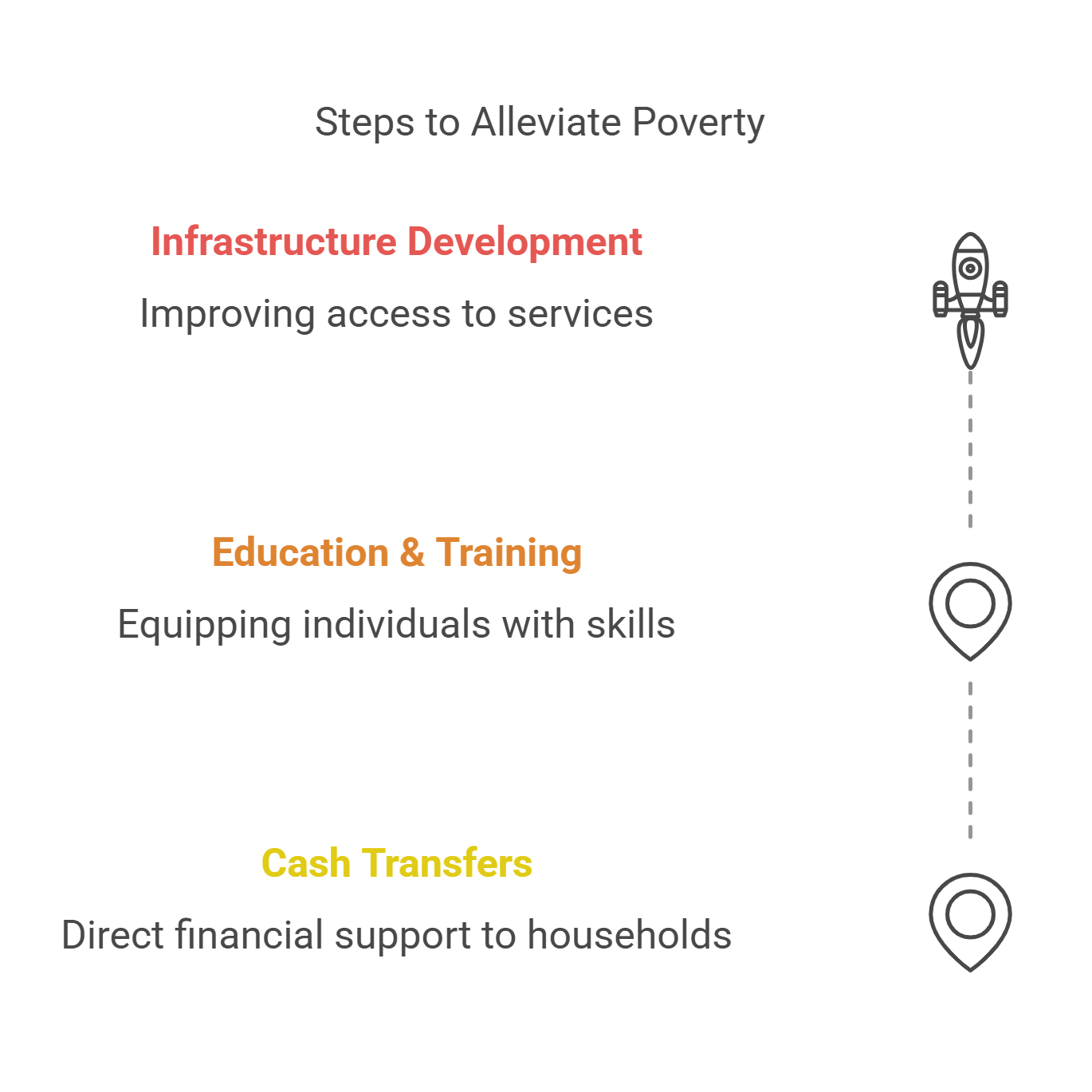
6. Trade Liberalization
Trade liberalization refers to the removal or reduction of trade barriers, such as tariffs, quotas, and subsidies, to promote free trade between nations. It aims to increase economic efficiency, foster competition, and expand markets.
- Key Mechanisms:
- Reducing Tariffs: Lowering taxes on imports and exports.
- Eliminating Quotas: Removing limits on the quantity of goods traded.
- Facilitating Agreements: Establishing trade pacts like NAFTA or the WTO framework.
- Benefits:
- Promotes economic growth by encouraging exports and investment.
- Increases consumer choice and lowers prices.
- Challenges:
- Can harm domestic industries unable to compete with cheaper imports.
- May exacerbate inequality if gains are unevenly distributed.
Example: China’s trade liberalization in the late 20th century boosted its economic growth and integration into the global economy.
Explained Simply: Trade liberalization is like opening more doors between countries to let goods, services, and ideas flow freely.
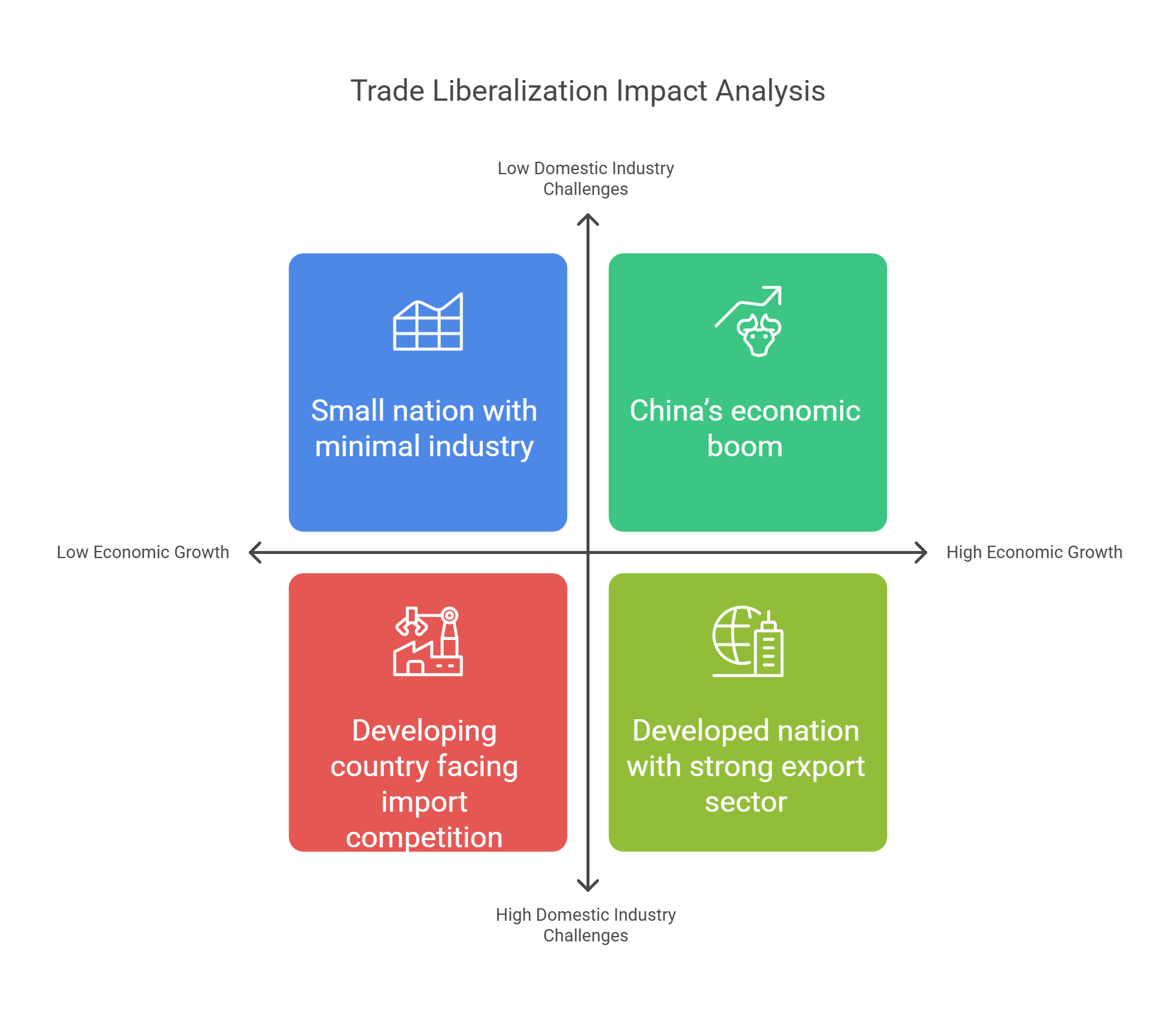
7. Resource Dependency
Resource dependency occurs when a country’s economy relies heavily on the extraction and export of natural resources, such as oil, gas, or minerals. While resource wealth can spur development, it often comes with significant risks.
- Key Issues:
- Dutch Disease: Overreliance on resource exports strengthens the currency, making other sectors like manufacturing less competitive.
- Price Volatility: Resource-dependent economies are vulnerable to global price fluctuations.
- Resource Curse: Wealth from resources may fuel corruption and inequality, hindering broader development.
Example: Venezuela’s dependence on oil revenues left its economy highly vulnerable to falling crude prices.
Explained Simply: Resource dependency is like putting all your eggs in one basket—if the basket breaks, the entire economy suffers.
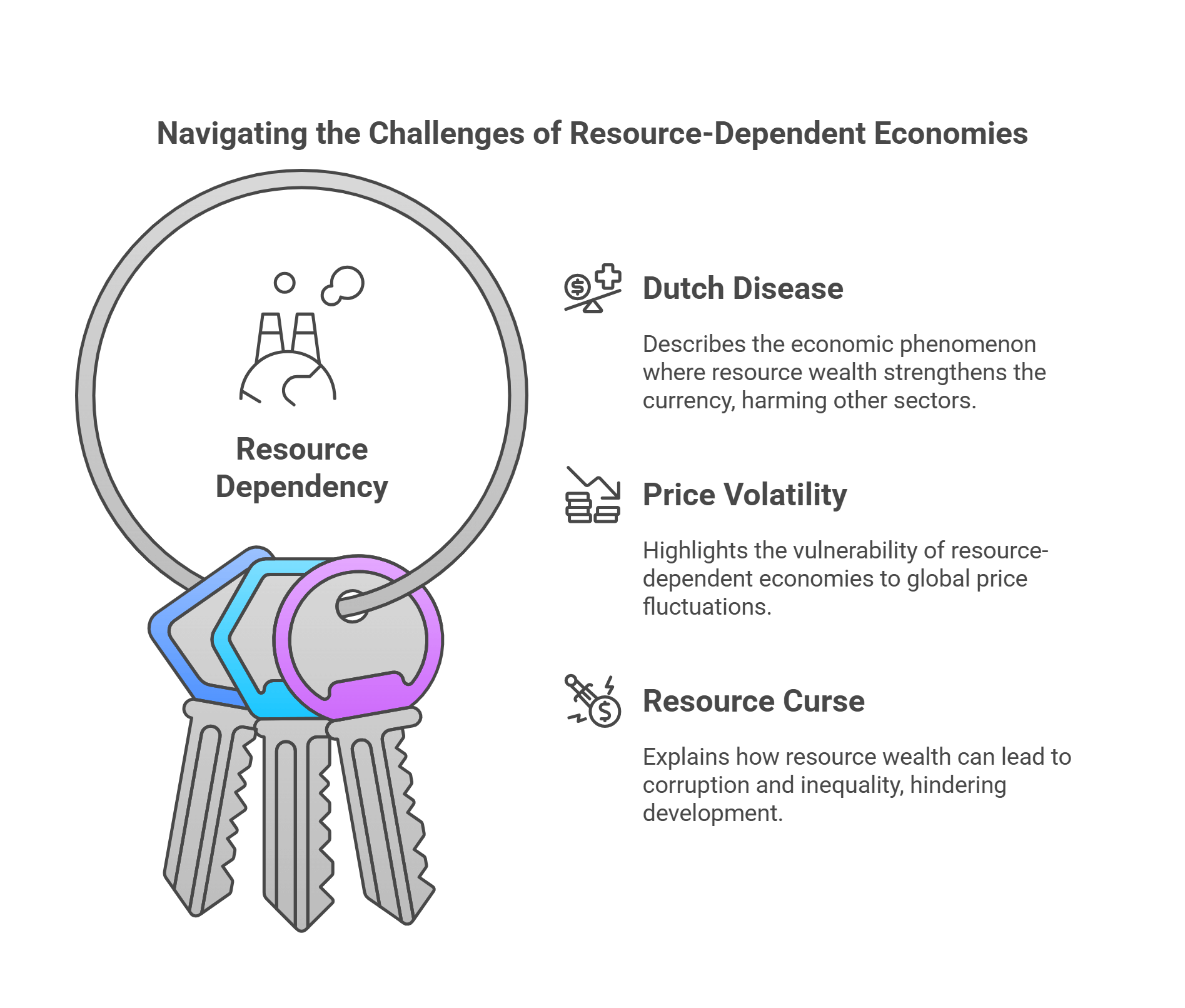
8. Economic Inequality
Economic inequality refers to disparities in income, wealth, and access to opportunities within and between societies. It is a significant barrier to sustainable development, often perpetuating poverty and social instability.
- Types of Inequality:
- Income Inequality: Differences in wages and earnings.
- Wealth Inequality: Unequal distribution of assets like property and investments.
- Opportunity Inequality: Unequal access to education, healthcare, and jobs.
- Key Drivers:
- Globalization and technological advances favoring skilled labor.
- Weak redistributive policies, such as inadequate taxation or social welfare programs.
Example: The Gini coefficient measures income inequality, with South Africa having one of the world’s highest levels of inequality.
Explained Simply: Economic inequality is like playing a game where some players start with more resources, making it harder for others to catch up.
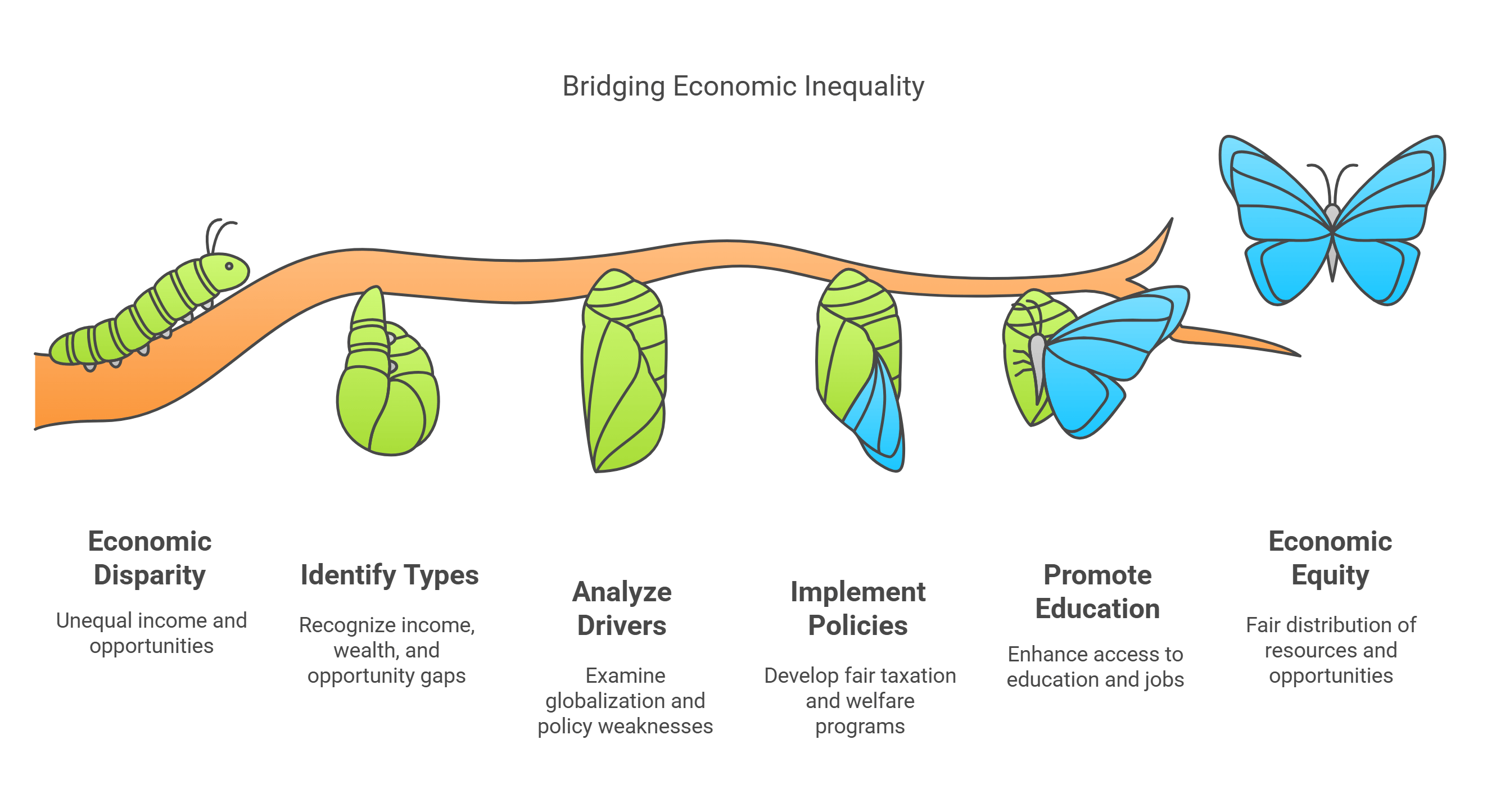
9. Import Substitution
Import substitution is a development strategy that focuses on reducing dependency on foreign goods by promoting domestic production of industrial goods. It is often used by developing countries to build self-sufficiency and industrial capacity.
- Key Policies:
- Tariffs on Imports: Protect domestic industries from foreign competition.
- Subsidies for Local Industries: Support domestic firms in scaling up production.
- Infrastructure Development: Build facilities and supply chains to support local manufacturing.
- Benefits:
- Reduces trade deficits and increases national self-reliance.
- Encourages industrial diversification.
- Criticisms:
- Can lead to inefficiency and higher consumer costs if domestic industries lack competition.
- Risk of trade retaliation by other nations.
Example: India adopted import substitution policies in the mid-20th century to develop its industrial base, although inefficiencies later led to liberalization.
Explained Simply: Import substitution is like growing your own food to reduce reliance on imports, even if it costs more initially.
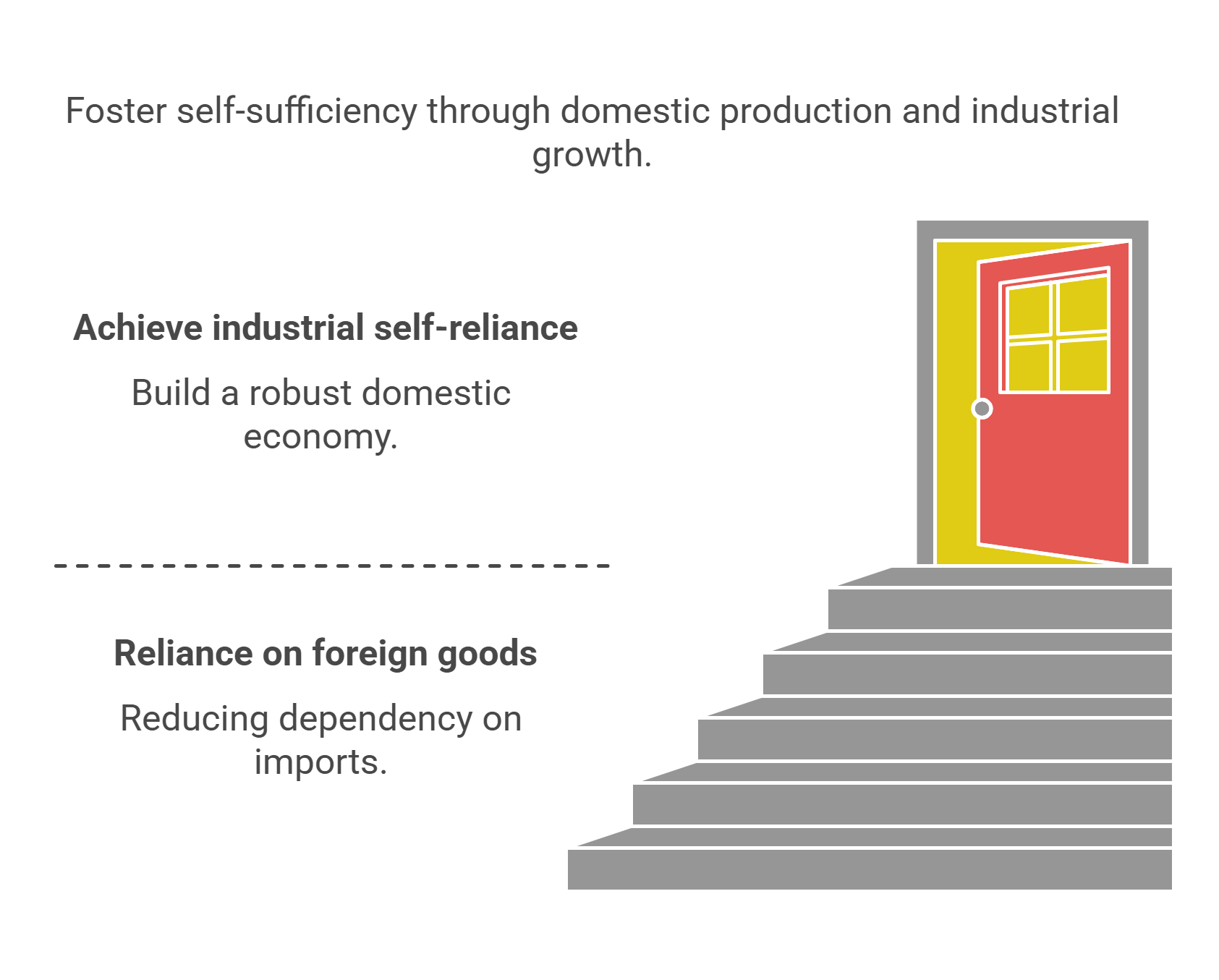
10. Economic Resilience
Economic resilience refers to a country’s ability to withstand and recover from economic shocks, such as financial crises, natural disasters, or geopolitical conflicts. It emphasizes adaptability and sustainability in economic systems.
- Key Strategies:
- Diversified Economies: Reducing reliance on a single sector or resource.
- Social Safety Nets: Providing unemployment benefits and healthcare during downturns.
- Robust Institutions: Ensuring strong governance to manage crises effectively.
- Indicators of Resilience:
- Quick recovery from recessions.
- Stable employment and GDP growth despite external shocks.
Example: After the 2008 global financial crisis, Germany’s diversified industrial base and social policies helped it recover faster than many other economies.
Explained Simply: Economic resilience is like a shock absorber for the economy, helping it bounce back quickly after disruptions.
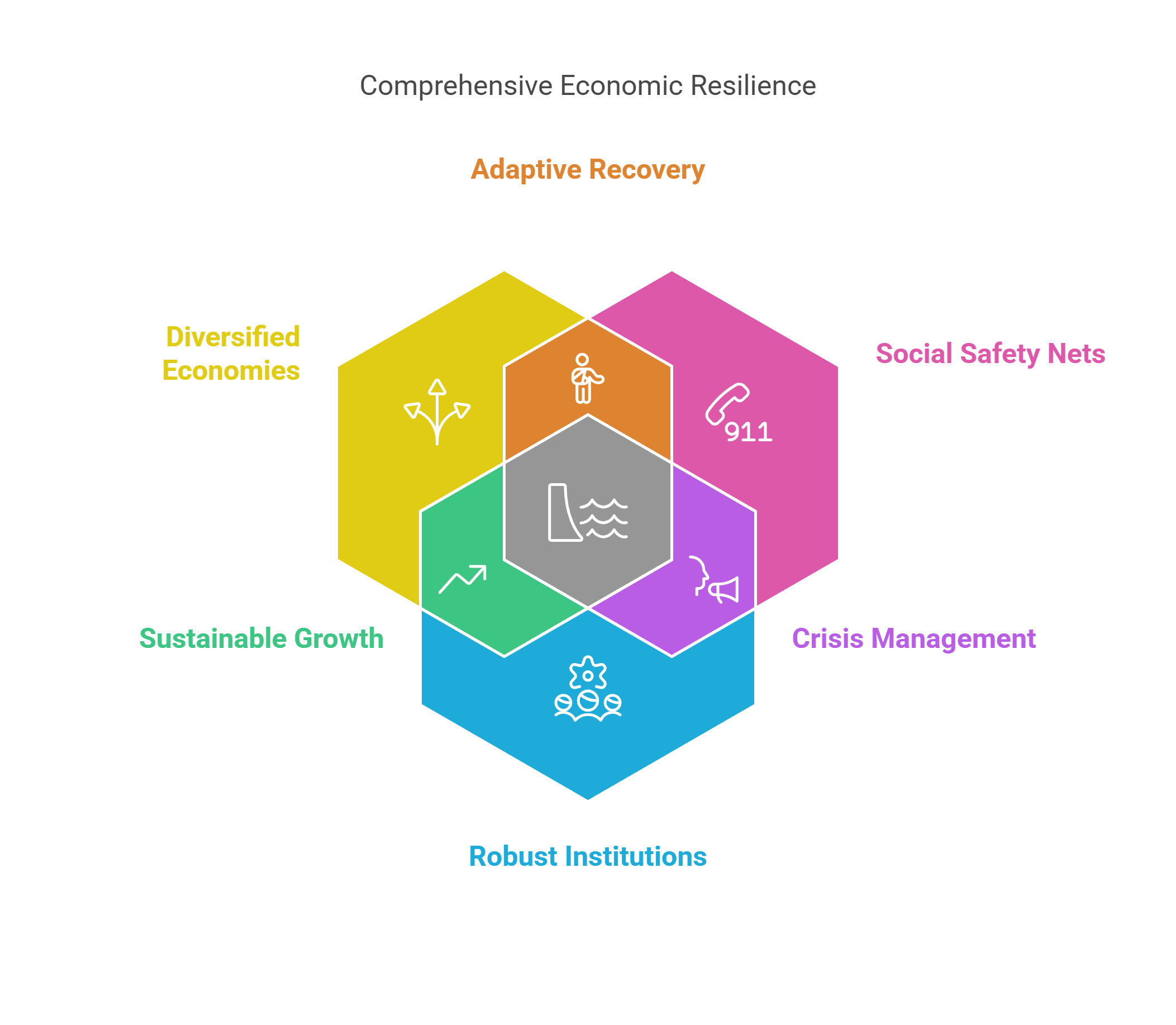
✨ Conclusion
The economics of development explores how nations strive to achieve equitable growth, alleviate poverty, and ensure sustainability. By understanding concepts like HDI, trade liberalization, and economic resilience, readers can critically analyze RC passages and appreciate the complex interplay of policies, resources, and global trends shaping economic progress.










